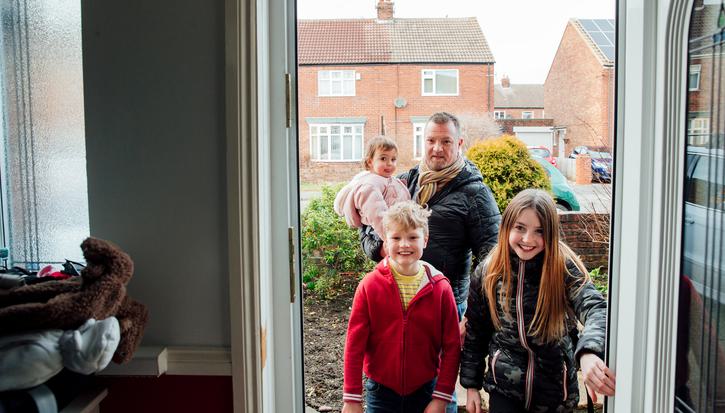Come together: Lessons from Bedford on reaching out to Britain’s most isolated minorities
Article
60-second summary
Migrant integration is one of Britain’s most politically sensitive topics. Yet what facilitates and impedes integration, and even the definition of what ‘integration’ actually means, are difficult to pin down. This report looks at the town of Bedford, to gain an insight into what works, and what doesn’t, in creating a socially cohesive town. Having had similar levels of immigration as most towns and cities in Britain, and given its diverse population and conventional socioeconomic profile, Bedford is an instructive case study to investigate integration in Britain today.
The government recently commissioned Dame Louise Casey to undertake a review into the integration of Britain’s most isolated communities. That review raised alarm at the poor state of integration in Britain. While it made some important observations, it offered few concrete suggestions for what can be done. This report looks at how Bedford’s residents have made integration work for their community. We argue that Bedford’s experience shows how concrete, empowering interventions can boost integration.
Some factors make Bedford a well-integrated place: the pace of demographic change has been steady and there has been good local leadership. Local people have made small adaptations to make the process of integration easier for newcomers. Community groups have proven resilient.
But for some parts of Bedford’s community, integration has been more difficult. There is some evidence that enclaves are starting to develop. Bedford can try to head off these developments – by using planning legislation to foster ethnic diversity, for example.
The least integrated groups include eastern European migrant workers – particularly men who tend to socialise with others of their nationality and may be in Bedford transiently – and some groups of Asian Muslim women. Our focus groups with women from this hard-to-reach group found that household responsibilities, very low levels of confidence, traditional views of women’s roles in the family and little understanding of the options available combined to inhibit many of these women from engaging with wider Bedford society.
Some have argued that these women should be compelled to integrate, and penalised if they do not; yet our research found that the most effective strategy to overcoming this lack of integration is through actions to empower these women to overcome their obstacles. Simple adaptations to existing provision have been effective in Bedford, making a significant difference to many lives. Further small, sensitive adaptations to service provision could help build levels of confidence and mitigate family members’ concerns about women’s integration. These empowering adaptations offer instructive examples to other parts of the country, where there are concerns that some parts of the community are not integrated.
Key findings
Bedford has a long history of immigration, with major waves arriving from the 1950s, from a variety of different ethnicities. Civil society has broadly responded well to the challenges posed by increasing diversity, and local decision-makers have shown leadership in prioritising the issues of cohesion. But the pace of change is picking up. High levels of immigration are having an impact. Internal migration of ethnic minority Britons and higher birth rates among the non-white British population mean that all areas of Bedford have become more diverse over the past 20 years – and this trend is set to continue.
Barriers to integration for eastern European workers and Asian Muslim women
While the town is largely well integrated today, there are signs that enclaves are beginning to form. Data analysis from the 2011 census suggests this, as does our qualitative research undertaken with local residents, civil society stakeholders and service providers. Increasingly, there have been concerns that some migrants are not integrating well in the town, leading separate lives that leave little room for engagement with the rest of Bedford’s population. This is particularly the case for eastern European workers and among the Asian Muslim community.
For eastern European workers, EU free movement rules meant that while some settle in Bedford and gradually become part of the community, others come only transiently. Working largely among speakers of their own language, living in bedsits and with little call to establish passing contact with the rest of the town, these migrants – particularly men, who have less contact with services such as schools than women – do not follow the pathway of integration that previous migrants to Bedford have laid down.
Some Asian Muslim women have apparently struggled to establish even basic indicators of integration, such as learning some English or establishing connections outside the cultural group even after living in the town a long time. A range of factors combined to impede their integration.
- Hostility of family members to their engagement with people outside the social group, from husbands, mothers-in-law and parents for social and cultural reasons, and from some sons on religious grounds.
- Low levels of confidence impeded these women from making the steps that facilitate the integration of other migrants. Engaging with public services, going somewhere on their own, approaching authority figures or travelling to an unfamiliar part of the town were simply too intimidating.
- Household and caring responsibilities reducing the time and opportunities available for integrating.
We found evidence that sensitive adaptations that allowed women to overcome these obstacles could have a transformative impact on their integration. For example, a local swimming pool secured permission to run a women-only swimming class, which it targeted (primarily, but not exclusively) at Asian Muslim women. Over time, this swimming class reduced scepticism from hostile family members. Women’s confidence increased, and they managed to collectively organise their childcare responsibilities. Small, judicious and empowering adaptations made integration easier.
Adaptations such as these can be controversial. Gender segregation, especially in order to cater to religiously conservative groups, is a contentious issue. Similarly, using compulsive strategies to compel migrants to integrate causes concern in some quarters – but when used judiciously and in ways that are empowering and not punitive, there is a place for such measures.
Recommendations
- Target English language learning at the most isolated migrants and set up an interest-free loan to pay for tuition.
- Educate boys on the role of older women as well as girls of their own age.
- Develop the provision of culturally-sensitive childcare.
- Set up an integration hub in areas where migrant workers congregate.
- Establish a selective landlord licensing scheme.
Related items

The homes that children deserve: Housing policy to support families
As the government seeks to develop a new child poverty strategy, it will need to grapple with housing – the single largest cost faced by families.
Powering up public support for electric vehicles
Tackling greenhouse gas emissions will only work if public support for action remains strong. That means ensuring tangible improvements in people’s lives and heading off any brewing backlash.
Assessing the economy
Over the past few days and weeks, there has been lots of rather histrionic commentary about the UK’s economic situation as if the budget has created an economic disaster from which we’ll never recover.